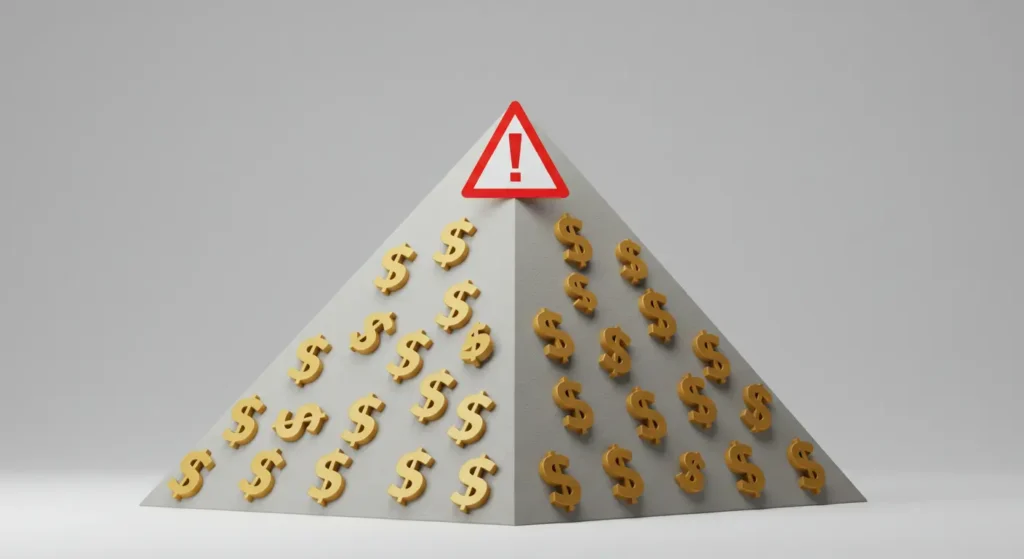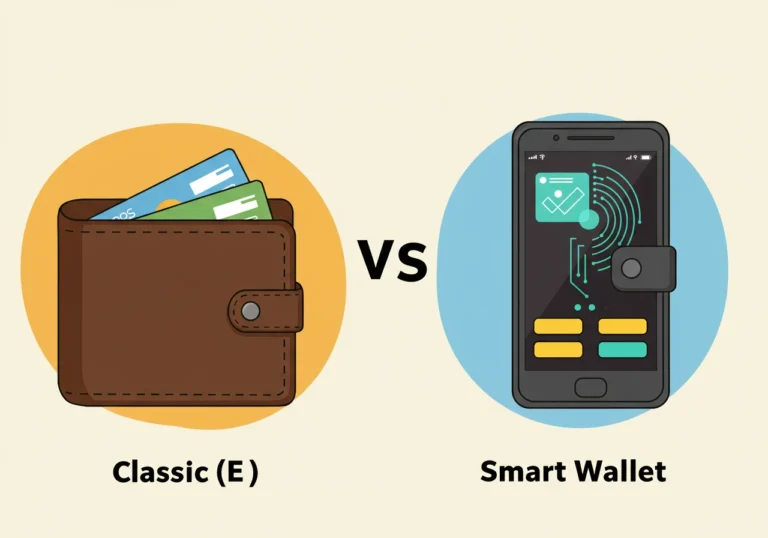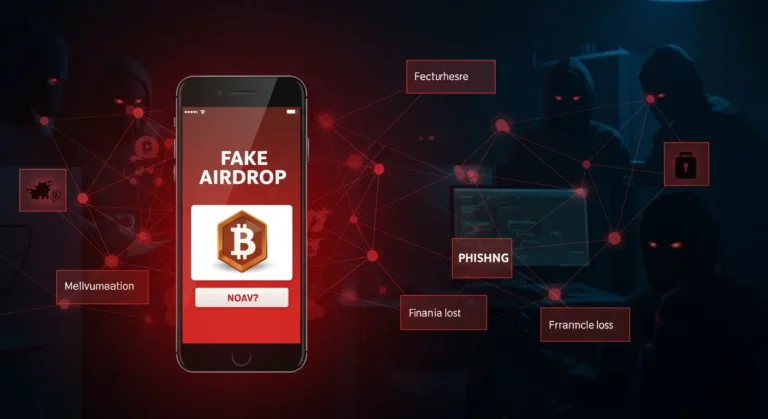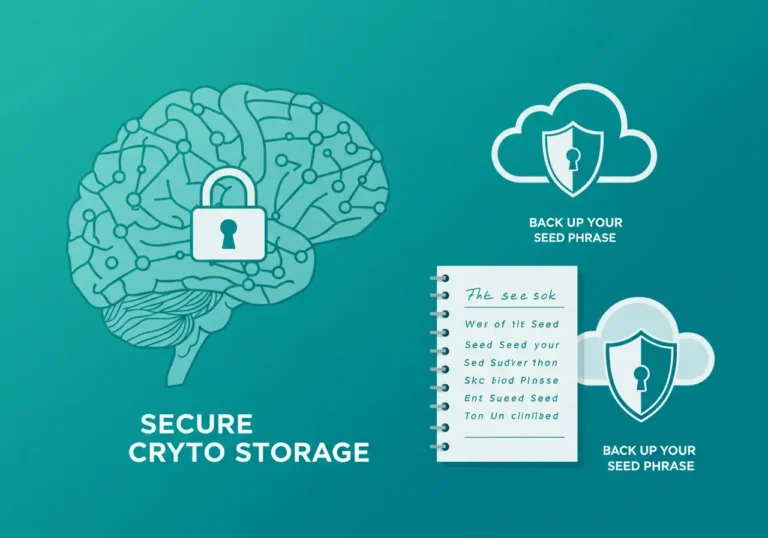Crypto Pyramid Schemes: How to Spot & Steer Clear

Hey, let’s talk about something that’s been popping up more and more—those sneaky crypto pyramid schemes. You’ve probably seen ads or posts online promising you’ll get rich quick with cryptocurrencies. I know, it’s tempting! Who doesn’t want a little extra cash? But some of these deals are traps, and I’ve seen folks get burned. So, grab a coffee, and let’s chat about how to spot these scams and keep your money safe.
How It All Starts
Picture this: you’re on your phone, scrolling through social media, and an ad pops up. “Invest $100 in this crypto and make $1,000 in a month!” Sounds like a dream, right? That’s how they hook you. A few years back, I almost fell for something like that myself—shiny promises and all. But here’s the catch: these crypto pyramid schemes aren’t real investments. They’re built to collapse, and most people lose everything.
What’s a Crypto Pyramid Scheme Anyway?
Okay, so a crypto pyramid is a scam where you’re promised big returns, usually with digital money like Bitcoin or Ethereum. The trick? They use cash from new people to pay the old ones. It looks like you’re making money, but it’s all smoke and mirrors. Once the new sign-ups stop, the whole thing falls apart—like a house of cards in a stiff breeze.
Think of it this way: it’s a tower that needs more and more people at the bottom to hold it up. The folks at the top might cash out, but everyone else? Out of luck.
Why Are They So Hard to Catch?
Crypto’s hot right now. You hear stories of people buying Bitcoin and striking it rich. Scammers know that, and they play on it. They make their schemes sound legit, tossing around buzzwords and fake testimonials. Ever notice how they push you to “act fast”? That’s on purpose—they don’t want you to think too hard.
Plus, crypto’s tricky to trace, so they hide behind it. Sneaky, huh? They’re counting on you being excited and jumping in without asking questions.
Spotting the Red Flags
Let’s break this down like we’re chatting at the kitchen table. Here’s how you can tell if it’s a cryptocurrency Ponzi scheme—yep, same thing, just a fancier name from an old scam artist named Ponzi.
“Guaranteed” Money
If someone says, “Put in $50, get $200 back, no risk,” that’s a lie. Crypto’s wild—prices bounce around like a kid on a trampoline. No one can promise you’ll make money every time. A buddy of mine once got sucked into a deal like that. “Ten percent a week!” they said. He asked how, and they just mumbled. Big clue.
Recruiting Friends
Ever hear, “Sign up, then get three friends to join, and you’ll earn big”? That’s a dead giveaway. Real investments don’t need you to play salesperson. It’s not about a product—it’s about dragging more people in.
Confusing Plans
If they can’t explain it simply, something’s fishy. Real crypto stuff—like buying a coin—makes sense when you break it down. Scams? They’re a jumbled mess. Ask questions. If they dodge or get fancy, walk away.
Nothing Real to Show
Legit projects have something—a new app, a service, something you can point to. Pyramid schemes just say “invest” and leave it at that. I saw one claiming their coin was “revolutionary,” but they couldn’t say what it did. Classic digital investment fraud.
Hurry Up and Join
“Last chance!” or “Spots are filling up!”—sound familiar? They want you to rush. Real deals don’t vanish if you sleep on it. Take your time. You’ve got the power here.
A Real Story That Hits Home
I know a lady named Sarah, a single mom just trying to get by. She saw an online ad promising to double her money with crypto. She put in $1,000—her savings for school stuff for her kid. The site looked slick, with glowing reviews all over social media. A few weeks later, poof—it was gone. She felt awful, but she’s not alone. These cryptocurrency blows happen too often, and they hit regular folks the hardest.
Keeping Yourself Safe
Alright, let’s flip this—how do you dodge these traps? It’s easier than you think, and I want you to feel good about it. Here’s what works.
Dig a Little
Before you hand over cash, poke around. Who’s behind it? Can you Google them? Search their name with “scam” and see what pops up. If it’s all vague or flashy with no substance, that’s your sign.
Skip the Hype
Social media’s full of “I made millions!” posts. Most of it’s fake—paid ads or bots. Don’t buy the glitter. Stick to what you can verify.
Chat It Out
Not sure? Tell a friend. I do this all the time. Saying it out loud can make it clear if it’s nonsense. If they’re confused too, that’s telling you something.
Start Tiny
Want to try crypto? Cool! Start with $10 or $20 on a trusted site like Coinbase. Learn the ropes without betting the farm. Baby steps, y’know?
Trust Your Gut
If it feels too perfect—like winning the lottery with no catch—it’s not real. Ask, “Why me?” Scammers don’t care about your win; they want your wallet.
Why This Matters

Protecting your money’s not just about dodging scams. It’s about your future. That cash you save could be for a trip, a house, or just peace of mind. Losing it to fraudulent schemes stinks, and I’ve seen it sting too many good people. You deserve better.
What If You’re Already In?
Caught in a scam? Don’t freak out. Stop sending money—right now. Save everything—screenshots, emails, whatever you’ve got. Report it to the cops or a group like the FTC if you’re in the States. Tell others so they don’t fall for it. And hey, it hurts, but you’ll bounce back smarter.
The Good Side of Crypto
Crypto’s not all bad, I swear! Done right, it’s neat—buy stuff, save, or back cool ideas. Stick to big names like Bitcoin and safe platforms. Curious? Dip your toe in, learn as you go, and double-check everything.
Wrapping It Up
These crypto pyramid schemes are slick, but you’re sharper. Watch for the tricks—guaranteed cash, recruiting, weird plans—and you’ll steer clear. You don’t need to be a tech whiz. Just slow down, ask stuff, and trust yourself. Where I’m from, we’d say, “Don’t buy a pig in a poke”—know what you’re getting. Keep your dreams safe, alright?
Table of Contents

Hello, I’m Edmilson Dias, founder of CoinBringer. I created this platform to guide people through the fast-moving world of cryptocurrency with clarity and safety. With years of research in blockchain and digital security, my goal is to translate complex topics into practical knowledge, offering reliable tutorials, safety insights, and guidance for both newcomers and experienced users.
Discover more from CoinBringer
Subscribe to get the latest posts sent to your email.







